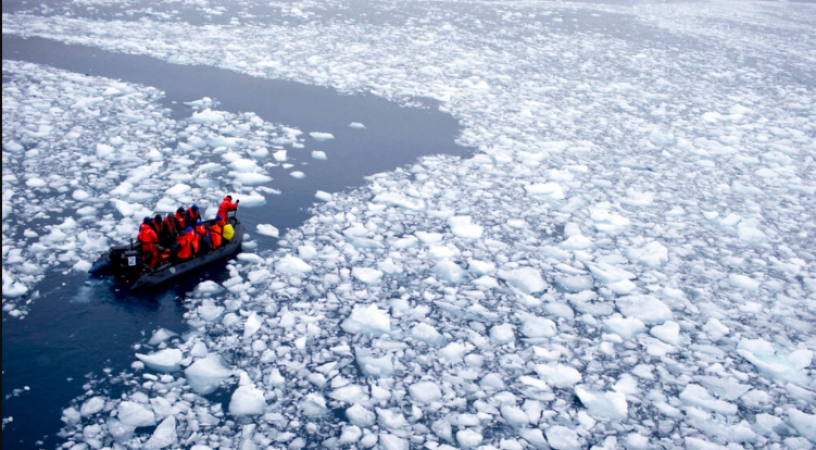
USA: The effects of climate change are becoming more severe every day. According to the NASA and European Space Agency-funded Ice Sheet Mass Balance Intercomparison Exercise (IMBIE), the loss of ice cover in Greenland and Antarctica has multiplied five-fold since the 1990s. Additionally, a quarter of the rise in the world's sea level is now attributed to the ice loss.
Scientists track changes in ice volume and flow using data from satellites like the ESA's CryoSat, and they track how much ice is lost using data from satellites that measure gravity. IMBIE, a compilation of these findings, is used by the International Panel on Climate Change (IPCC) and other significant organisations for assessment. This report, which was first published in 2011, is the third one.
According to the most recent IMBIE report, the amount of ice that was lost from the polar ice cover between 1992 and 2020 was 7,560 billion tonnes, or about the same as an ice cube with 20 km on each side. Since satellites began monitoring the loss of ice cover in 1992, polar ice has been disappearing every year. Furthermore, the last ten years saw the highest melting rates.
Also Read: A new supercomputer link chip called Jericho3-AI has been unveiled by US-based Broadcom
The Antarctic and Greenland lost a combined 612 billion tonnes of ice in 2019, which marked the peak in the rate of ice loss. This resulted from the Arctic heatwave in the summer of that year, which led to a record-breaking loss of ice from Greenland of 444 billion tonnes. The sixth-highest year on record for Antarctic ice loss, it totaled 168 billion tonnes.
Global sea level has increased by 21 mm since 1992. Nearly two-thirds (13.5 mm) of the sea level rise is attributed to ice loss from Greenland, and the remaining third (7.4 mm) is attributed to ice loss from Antarctica. Looking back to the early 1990s, the amount of sea level rise caused by melting ice cover was much less (5.6%).
Also Read: In the future China wants to build a permanent base on the Moon
There has been a startling fivefold increase in ice cover loss since the 1990s, which accounts for over a quarter (25.6%) of the global sea level rise. The IPCC predicts that ice loss will contribute between 148mm and 272mm to the average global sea level rise by the end of the century if the current trend continues.
Also Read: Microsoft has been threatened with legal action by Twitter CEO Elon Musk
According to IMBIE study leader Inès Otosaka, ice losses from Greenland and Antarctica have accelerated over the course of the satellite record and are now a significant factor in sea level rise. To predict the future behaviour of the ice sheets in a warming world and prepare for the risks that coastal communities around the world will face, continuous monitoring of the ice sheets is essential.